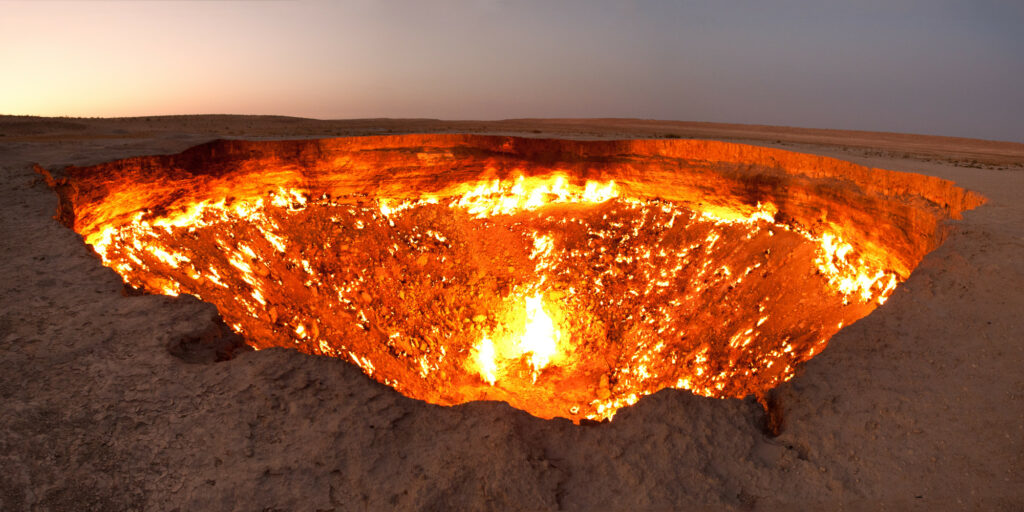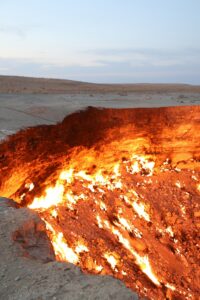
In the heart of Turkmenistan’s vast Karakum Desert, an infernal spectacle has been blazing for decades—a fiery crater known as the “Door to Hell.” This extraordinary phenomenon began in 1971 during a Soviet drilling operation that accidentally collapsed a natural gas field into a cavern. To prevent the escape of methane gas, scientists set the pit alight, anticipating the flames would extinguish within a few days. Over half a century later, the fire continues to rage, casting an eerie and mesmerizing glow against the desert night.
The Door to Hell, officially named the Darvaza Gas Crater, spans about 70 meters in diameter and plunges 20 meters deep. The perpetual flames licking at its edges and the intense heat rising from its core create a scene that feels otherworldly, drawing curious visitors and scientists alike from around the globe.
This burning crater is more than just a natural wonder; it serves as a stark reminder of the unexpected and enduring consequences of human intervention in nature. Despite its ominous name, the Door to Hell has become a symbol of both nature’s power and the relentless human curiosity that drives us to explore and understand our world.
